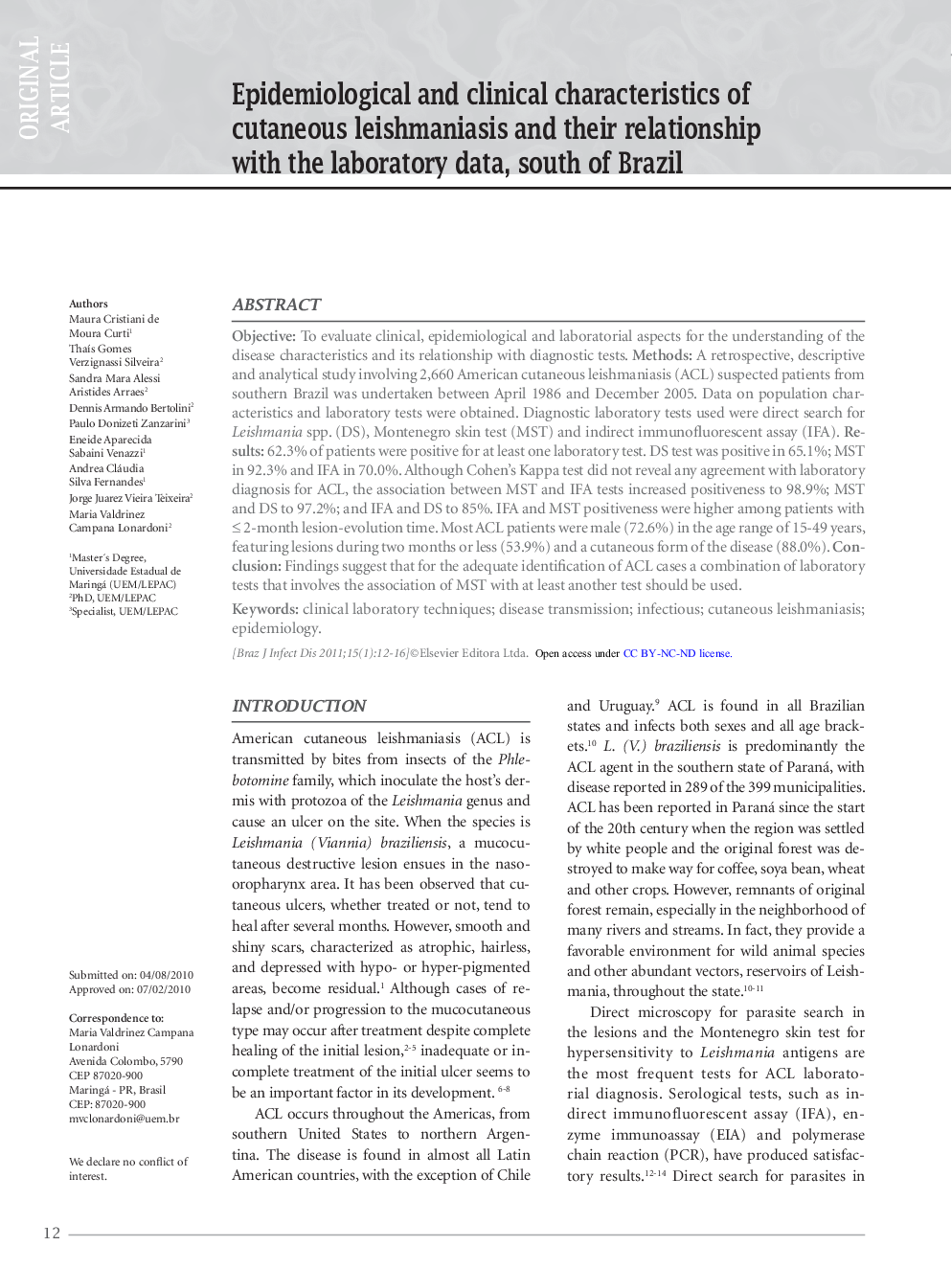| Article ID | Journal | Published Year | Pages | File Type |
|---|---|---|---|---|
| 3344606 | The Brazilian Journal of Infectious Diseases | 2011 | 5 Pages |
ObjectiveTo evaluate clinical, epidemiological and laboratorial aspects for the understanding of the disease characteristics and its relationship with diagnostic tests.MethodsA retrospective, descriptive and analytical study involving 2,660 American cutaneous leishmaniasis (ACL) suspected patients from southern Brazil was undertaken between April 1986 and December 2005. Data on population characteristics and laboratory tests were obtained. Diagnostic laboratory tests used were direct search for Leishmania spp. (DS), Montenegro skin test (MST) and indirect immunofluorescent assay (IFA).Results62.3% of patients were positive for at least one laboratory test. DS test was positive in 65.1%; MST in 92.3% and IFA in 70.0%. Although Cohen's Kappa test did not reveal any agreement with laboratory diagnosis for ACL, the association between MST and IFA tests increased positiveness to 98.9%; MST and DS to 97.2%; and IFA and DS to 85%. IFA and MST positiveness were higher among patients with ≤ 2-month lesion-evolution time. Most ACL patients were male (72.6%) in the age range of 15–49 years, featuring lesions during two months or less (53.9%) and a cutaneous form of the disease (88.0%).ConclusionFindings suggest that for the adequate identification of ACL cases a combination of laboratory tests that involves the association of MST with at least another test should be used.
